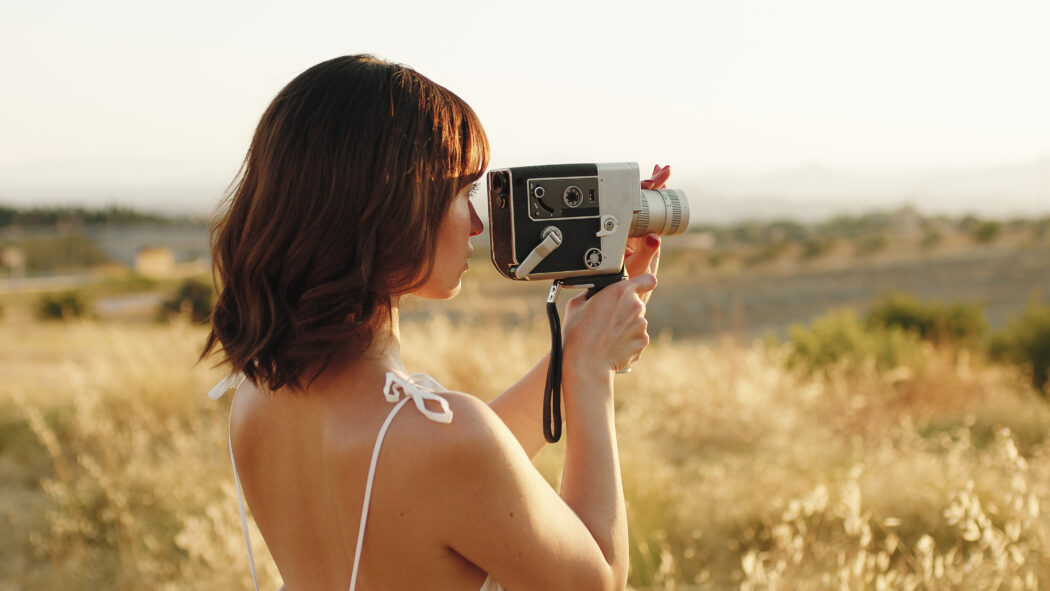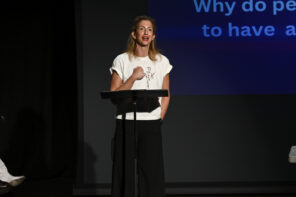Women Filmmakers are worthy of recognition and deserve to be given far more opportunities
Of the roughly 500,000 films that are still around since cinema began, 21% percent of all directors, writers, producers, executive producers, editors and cinematographers on the top 100 films of 2020 were women, a historic high. Since cinema’s conception, women filmmakers have had to fight for equal opportunity to direct feature-length films. The first female director to win an Oscar was Lina Wertmüller for her 1977 film Seven Beauties. Only five women directors have even been nominated; the other four are Jane Champion (1993’s The Piano), Sofia Coppola (2003’s Lost In Translation), Kathryn Bigelow (2009’s The Hurt Locker) and Greta Gerwig (2017’s Lady Bird). In a historic moment, two women—Chloe Zao for Nomadland and Emerald Fennell for Promising Young Woman—were nominated for directing in 2021.
To understand the future of independent cinema, one must understand the past. There has never been a dearth of talented female filmmakers, but Hollywood hasn’t always recognized their talents or contributions to the industry. Even those early visionaries are forgotten too easily. Narrative filmmaking—not just female filmmaking, but the medium itself—began with Alice Guy-Blaché, a French visionary. Her groundbreaking 1912 film A Fool And His Money was the first to have an all African-American cast. Experimenting with Leon Gaumont’s new Chronophone sound system as well as color tinting and special effects, Blaché revolutionized how films were made. In 1953, she was awarded the Légion d’Honneur, the highest non-military award France offers. Blaché created the largest pre-Hollywood studio in America, the Solax, in Fort Lee, New Jersey. In 2011, the Directors Guild of America honored her with a posthumous Lifetime Achievement Award.
While few know her name, Guy-Blaché helped give birth to an art form.
Elaine May is another pioneering filmmaker with an independent spirit. Today, at 91, she is finally getting attention for her work as both an actress and a director. In the 1950s, May broke into stardom with her improvisational comedy act with Mike Nichols. She made her film writing and directing debut in 1971 with her black comedy A New Leaf, inspired by “The Green Heart,” a short story by Jack Ritchie in an Alfred Hitchcock Mystery Magazine. May wanted to release a 180-minute cut, but Paramount cut it down to 102 minutes. May sued to stop the release, but Paramount prevailed, and reviewers embraced it. In 1972, May directed The Heartbreak Kid using a screenplay by Neil Simon, a financial and critical success. She followed these comedies with a bold and daring move, directing the neo-noir crime film Mikey And Nicky starring Peter Faulk and John Cassavetes. Again, May had conflicts with the studio and eventually was fired from the project. But being a true maverick, she hid two reels of the negative and was rehired when the studio relented. A newly restored director’s cut can be viewed on the Criterion Collection.
In her 48-year career, filmmaker Ida Lupino broke new ground as an artist and became the most prominent female director in the 1950s. When Lupino directed the noir film The Hitch-Hiker in 1953, she was the only woman director in Hollywood. Lupino fought to direct her own films and created her own independent film company, The Filmmakers, which produced an abundance of critically acclaimed films that were ahead of their time, including Not Wanted–about an unwanted pregnancy–and Outrage, the first film about rape. Lupino also directed more than 100 television episodes and appeared in 59 films.
Today, independent films struggle against Hollywood’s vision of tent-pole films, which are usually superhero mega-movies that cost astronomical amounts of money and are predominately directed, produced, written by and filmed by men. Regardless of quality, these films all share the same goal: to make money. Interestingly, the highest-grossing superhero movie, 2017’s Wonder Woman, was directed by the first woman to direct a superhero movie, Patty Jenkins, and earned more than $1 billion worldwide. Clearly, when given the opportunity, women knock it out of the park. When Hollywood doesn’t open its doors, however, women continue to create extraordinary work in the independent film world. Here are a few examples of films made by females who deserve respect, success and much more attention.
The Stylist, directed by Jill Sixx Gevargizian, 2020
Jill Sixx Gevargizian was born to make horror films. She wrote, produced and directed her first feature, The Stylist, an old-fashioned love letter to classic giallo films and other horror films of the 1970s and 1980s. The quintessential indie film tells the story of an estranged hairstylist who is obsessed with the lives of her clients and suffers a mental break, leading to stalking and murder. Actress Najarra Townsend plays the film’s antagonist, Claire, in a surreal character study that elevates the film’s tone and atmosphere. As a memorable sociopath killer, Claire kills her victims in gruesome ways and imagines herself in their lives. Through her own sadistic detachment from reality, she tries to find some human connection. Gevargizian is well on her way to becoming one of the most prominent horror filmmakers of all time. With her masterful direction and carefully placed shots in the film’s small-town setting, The Stylist truly feels like a master-craft exercise in psychological horror. The film will get a Blu-ray release from Arrow Films in June.
The Nightingale, directed by Jennifer Kent, 2018
Following the mega-success of the horror film she directed, The Babadook, filmmaker Jennifer Kent amplified the stakes with her sophomore effort, The Nightingale. A period piece set in the Australian wilderness penal colony Van Diemen’s Land (known today as Tasmania) in 1825, the dark, violent film tells the tale of a woman played by Aisling Franciosi who sets out on a journey fueled by bloodthirsty revenge after she is raped and her infant child and husband are murdered. Franciosi finds her strength and peace in the wilderness alongside her guide, who becomes her protector and accompanies her in fulfilling her vengeance. While this film is heavy-handed and visually graphic, it captures an authentic look at rage in midst of war, dealing with rape, war and racism, all wrapped up in the stunning Australian terrain. It is an important film and a necessary one. Beautifully orchestrated through its cinematic lens, this film will be discussed in film courses for years to come.
First Cow, directed by Kelly Reichardt, 2019
Kelly Reichardt is an auteur visionary with an impressive and unique body of work that began in the early ‘90s and has gone full speed ahead ever since. Known for her minimalist and realist style structure, Reichardt has made films such as Certain Women, Meek’s Cutoff, Wendy and Lucy and most recently, First Cow. The film is a period piece based on a novel titled Half Life by Jonathan Raymond and features iconic Star Trek; Deep Space Nine actor Rene Auberjonois in one of his final film roles before his death. The story takes the viewer to Oregon in 1820, when two men, John Magaro and Orion Lee, come into a unique business venture involving the region’s first living cow. The men form a bond through their exploits, demonstrated by Reichartd’s unique use of ambiguous storytelling and a sharply polished screenplay penned by Reichardt and Raymond. The film was instantly met with critical praise yet failed to garnish any major awards. This truly is a shame because this charming slice-of-life film has a beautiful calmness and two beautiful performances. It is a special and rewarding independent film unlike anything else.
While Hollywood does not fully embrace all voices that should be represented, I encourage you to seek them out. Different perspectives bring incredible cinematic experiences. I can’t imagine the experiences we would have missed without the women mentioned here. Support women at the box office and let Hollywood know that their work deserves just as much time on the big screen as men’s.









1 Comment